
"Pourvu qu'elles soient douces" French pronunciation:[puʁvykɛlswadus] is a 1988 synthpop song by the French artist Mylène Farmer. Third single from her second studio album Ainsi soit je..., it was released on 12 September 1988. The long music video version was considered provocative, and contains various scenes of sexual content. It achieved great success in France, becoming Farmer's first number-one hit.
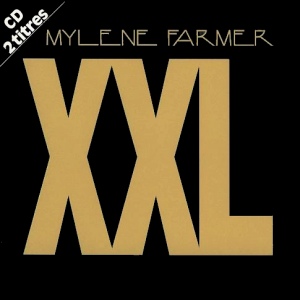
"XXL" is a 1995 song recorded by French singer-songwriter Mylène Farmer. The song was the lead single from her fourth studio album Anamorphosée and was released on 19 September 1995. It marked an important change in the singer's career, with more pronounced variété sonorities, more accessible lyrics, and a music video directed by a new producer. Although it entered directly at number one on the French singles chart, it dropped quickly and achieved mixed success.

"Redonne-moi" is a 2005 song recorded by the French artist Mylène Farmer. This pop ballad was the third single from her sixth studio album, Avant que l'ombre..., and was released on 2 January 2006. Like all other tracks of the parent album, it was written by Farmer and the music was composed by Laurent Boutonnat. The song has poetic lyrics and a melancholy music, and is about death, memory, and hope. About three months before the release, Farmer exceptionally accepted to perform the song in a television show, which she did not for other singles from Avant que l'ombre.... The accompanying music video, filmed by François Hanss and broadcast from 11 January 2006, shows Farmer singing in a sculpture workshop. In spite of being a top ten hit in France, "Redonne-moi" became the less-selling single from the album, with rather disappointing sales figures.

"C'est une belle journée" is a 2001 song recorded by French singer-songwriter Mylène Farmer. It was the second single from her best of Les Mots and was released on 16 April 2002. The song contains melancholy lyrics set to dance music and was illustrated by a cartoon video produced by Farmer's boyfriend. It achieved great success in France where it remained ranked for several months on the top 50.

"Les Mots" is a 2001 song recorded as a duet by the French singer-songwriter Mylène Farmer and the English soul singer Seal. It was the first single from her best of album, Les Mots, and was released on 13 November 2001. It was Farmer's third duet, after those with Jean-Louis Murat in 1991 and Khaled in 1997, and her first international duet. "Les Mots" is a bilingual song, containing verses in French and in English. In terms of sales, "Les Mots" is Farmer's fourth biggest success in France, behind "Désenchantée", "Pourvu qu'elles soient douces" and "Sans contrefaçon".

"Dessine-moi un mouton" is a 1999 song recorded by French singer-songwriter Mylène Farmer, first in a studio version, then in a live version during her 1999 concert Mylenium Tour. The song was the only single from her third live album Mylenium Tour and was released on 5 December 2000. The title draws from a direct quotation to a well-known scene in French children's book Le Petit Prince by Antoine de Saint-Exupéry. Although it was generally appreciated by critics and was a top ten hit in France, it had moderate success in terms of sales.

"Optimistique-moi" is a 1999 song recorded by the French artist Mylène Farmer. The fourth single from her fifth studio album, Innamoramento, it was released on 22 February 2000. Dealing with parental relationships, the song enjoyed many remixes and formats and achieved success in France where it reached number seven.

"Je te rends ton amour" is a 1999 song recorded by the French artist Mylène Farmer. The second single from her fifth studio album Innamoramento, it was released on 8 June 1999. The song became another top 10 hit in France for Farmer, and its controversial music video gained considerable attention at the time, being censored by several television channels.

"Maman a tort" is a 1984 song recorded by French artist Mylène Farmer. It was the debut single from Farmer's first studio album Cendres de Lune, and marked the beginning of her collaboration with her long-time composer, Laurent Boutonnat. With lyrics by Jérôme Dahan, who also helped compose the song with Boutonnat, the song was first released in March 1984. Initially, Boutonnat and Dahan held auditions to find a performer for the song, which ultimately led to Farmer being chosen. An English-language version, titled "My Mum Is Wrong" and produced by F. R. David, was released in September 1984.
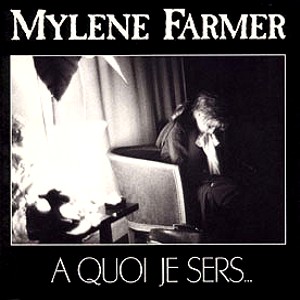
"À quoi je sers..." is a 1989 song recorded by French singer-songwriter Mylène Farmer. The song was a standalone single when it was released in July 1989, as it was previously unavailable on Farmer's albums, apart from a live version on En Concert. Marking the end of Farmer's first period of work, it achieved moderate commercial and popular success back then but is now considered a "Farmer classic".

"Comme j'ai mal" is a 1996 song recorded by French singer-songwriter Mylène Farmer. Fourth single from her fourth album Anamorphosée, it was released on 1 July 1996. It was a relative failure: indeed, it failed to reach the top ten in France and was the least-selling single from the album.
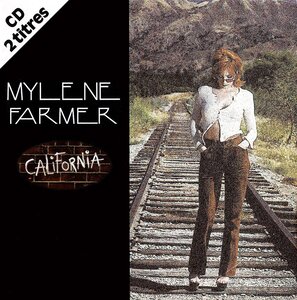
"California" is a 1995 song recorded by the French artist Mylène Farmer. It was the third single from her fourth studio album, Anamorphosée, and was released on 26 March 1996. The song marked her only collaboration with American movie screenwriter and director Abel Ferrara, who directed the very expensive music video in which Farmer appears both as a bourgeois woman and a prostitute. A tribute to California, the song is generally deemed one of Farmer's signature songs and has been performed during most of the singer's subsequent tours. It has met with relative success in France and Belgium, and became one of her hits in Russia.

"Je t'aime mélancolie" is a 1991 song recorded by the French artist Mylène Farmer. The song was released as the third single from her third studio album L'autre..., in December 1991. Characterized by its gloomy lyrics and its music video shot on a boxing ring, it achieved success, becoming a top ten hit in France and Belgium.
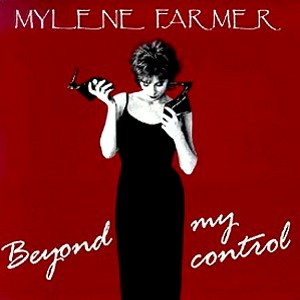
"Beyond My Control" is a 1991 song recorded by French singer-songwriter Mylène Farmer. It was the fourth single from her third studio album L'autre... and was released in May 1992. The song probably remains well known for its controversial music video, censored upon release due to its sexual and violent content. It achieved minor success in terms of sales, even though it reached the top ten in France and Belgium.
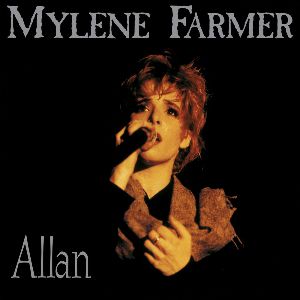
"Allan" is a 1988 song recorded by French singer-songwriter Mylène Farmer from her second album, Ainsi soit je... It was the first single from her first live album, En Concert, released in December 1989. The lyrics clearly refer to a fairy tale by Edgar Allan Poe, mentioning one of his characters. Although the single met with success in discothèques, its sales remained relatively low in comparison with Farmer's other singles.

"Ainsi soit je..." is a 1988 song recorded by the French artist Mylène Farmer. The song was released as a single twice: as the second single from her second studio album Ainsi soit je... on 4 April 1988, and as the second single in a live version from her second live album Live à Bercy on 20 August 1997. Both versions achieved a relative success on the charts, failing twice to reach the top ten in France.

"Tristana" is a 1987 song recorded by the French artist Mylène Farmer. Fourth single from her first studio album Cendres de Lune, the song was released in February 1987. As for the previous single "Libertine", the music video was produced as a film, with many extras and a huge budget. The second single in Farmer's career with lyrics entirely written by the singer herself, it enjoyed an intense promotion on television and met a great success in France, reaching the top ten.
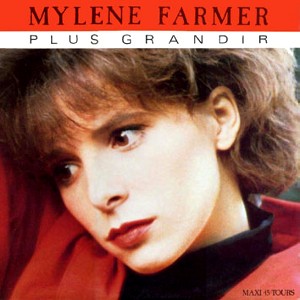
"Plus grandir" is a 1985 song recorded by French singer-songwriter Mylène Farmer and is the first song written by the singer. It was released twice: first, on 25 September 1985 in a studio version as second single from Farmer's debut album Cendres de Lune, then on 12 May 1990 in a live mix version as second single from the live album En Concert. In spite of positive critics and a music video produced as a short film in cinemascope, the song achieved moderate success in France in terms of sales and chart performances.

"Que mon cœur lâche" is a 1992 song recorded by the French singer-songwriter Mylène Farmer. The single was released on 23 November 1992 to promote Farmer's compilation album Dance Remixes. Farmer also recorded an English-language version of the track, entitled "My Soul Is Slashed" which was released in May 1993. Originally recorded as a charity single, the song deals with AIDS and caused some controversy as lyrics seem to encourage the rejection of condoms. Produced as a short film, the music video was directed by the French film director Luc Besson, and features Farmer as an angel sent to Earth by God. The song reached the top ten in France and Belgium.

"Sans contrefaçon" is a 1987 song recorded by French artist Mylène Farmer. It was released on 16 October 1987 as the first single from her second studio album, Ainsi soit je.... It was a big hit in 1987 and is one of her three best-selling singles. It became a very popular song in France over the years and has been covered by many artists. A remixed version by the DJ J.C.A. was released on 5 August 2003 as the first single from the compilation album called RemixeS.









